The unsung American city at the end of BA’s newest flight route
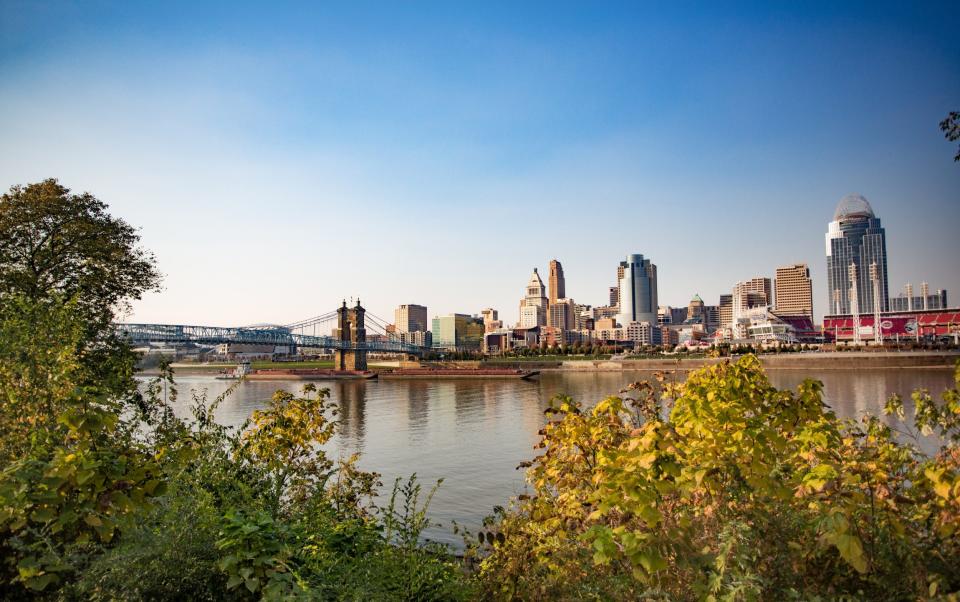
Standing on the roof of the Carew Tower at 10am, I have to hold my hand to my face to see through the glare of mid-morning. The star attraction is still unmistakable, even in the harsh sunlight. The structure beneath my feet is an Art Deco statement; a 49-storey red-brick marvel that has crowned the Netherland Plaza hotel since 1930. Yet my eye does not rest on it. Instead, it is pulled down, five blocks south, to where the Ohio slides along the city’s edge – one of the USA’s greatest rivers, drawn onto the map in silver ink.
The whole scene is nothing less than an American junction. Because if you were going to create a city in a place so precise that it would be the start of one thing and the end of another, you might well pick this spot, on the bank of the Mississippi’s foremost tributary.
Cincinnati is exactly that city. It is not just that, pinned to the lower flank of the state which shares the river’s name, it exists in a location where two of the 50 pieces of the US jigsaw intersect. It is that, with the opposite side of the river belonging to Kentucky, this stretch of the Ohio is a bottleneck where the traditional American North and South rub up against each other; a westerly continuation of the old Mason-Dixon Line, etched in water.
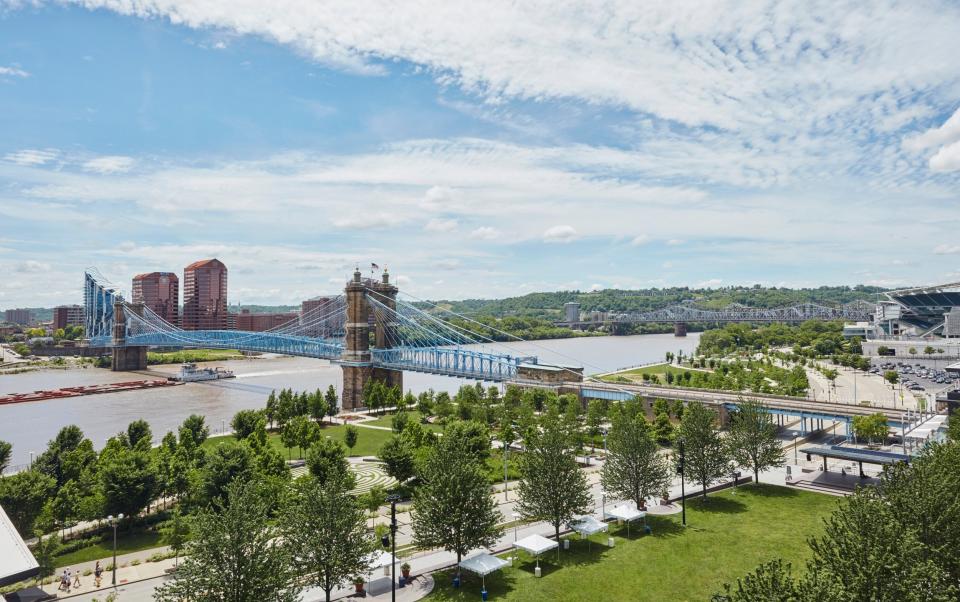
Junctions mean traffic. Traffic means people. In the 235 years since it was founded (in 1788), Cincinnati has been a consistent people-magnet – for European settlers coming west; for waves of immigrants, lured down-river, seeking a better life in the American interior. As of this week, it should attract visitors from the UK too. Monday (June 5) will see the launch of a new British Airways flight to the city from Heathrow; a much-needed innovation which will finally drop a direct London air-service into the vast Midwestern expanse between Chicago, Detroit, Pittsburgh, Washington DC, Nashville and St Louis. In doing so, it will open up Ohio and Kentucky to curious travellers (and Indiana as well).
Those who decant into the airport in the coming months will have to cross the water – Cincinnati/Northern Kentucky International is on the southern side of the river. In doing so, they will be following what was once a much-trodden – and wildly dangerous – path.
Go back to the mid-19th century, and Cincinnati was on the front line. When it formally emerged as a state in 1803, Ohio already had a ban on slavery. The South, stretching out below it, most certainly did not – and the Emancipation Proclamation which (officially, at least) put an end to this most inhumane of practices on American soil was still a long way over the horizon, in 1863. Almost from the moment of its birth, Cincinnati was a light at the end of a particularly perilous tunnel; a station on the Underground Railroad, offering escaped slaves sanctuary from the whip-wielders and plantation owners of Kentucky. For decades, these desperate souls came north, tip-toeing under cover of darkness, huddled in hedgerows, concealed in out-houses, inching towards the lights on the Ohio’s opposite shore – the river’s narrowness at this point making Cincinnati an appealing place to cross.
This race to liberty is now saluted on the very bank where rowing boats once paddled out on rescue missions. The National Underground Railroad Freedom Center sees no need to soften its tone – skipping excuses about slavery being crucial to the USA’s economic development and driving straight to the human cost. It does so via beauty – green glass beads hanging from the ceiling of a windowless space in commemoration of those who drowned in the Atlantic on the journey from Africa. It does so too via brutal relics – a set of shackles and chains used on those cruel voyages; a squat wooden slave house, built in 1832 in Germantown, Kentucky, which lived on as a barn used for drying tobacco. And it does so by hailing those who fought so fiercely – abolitionist Frederick Douglass; author and campaigner Harriet Beecher Stowe, who lived in Cincinnati between 1832 and 1850.
If the Center makes for an discomfiting experience – and it is absolutely meant to – then other, more upbeat legacy stories echo across other parts of the city. Even as slaves were making their terrified dashes north, others were taking a different journey to the same destination. The introduction of the steamboat onto the Ohio in 1811 transformed Cincinnati into a transportation hub and a boom town, swollen with jobs. The women and men who came to fill them were mostly Irish and German immigrants, chasing new lives.
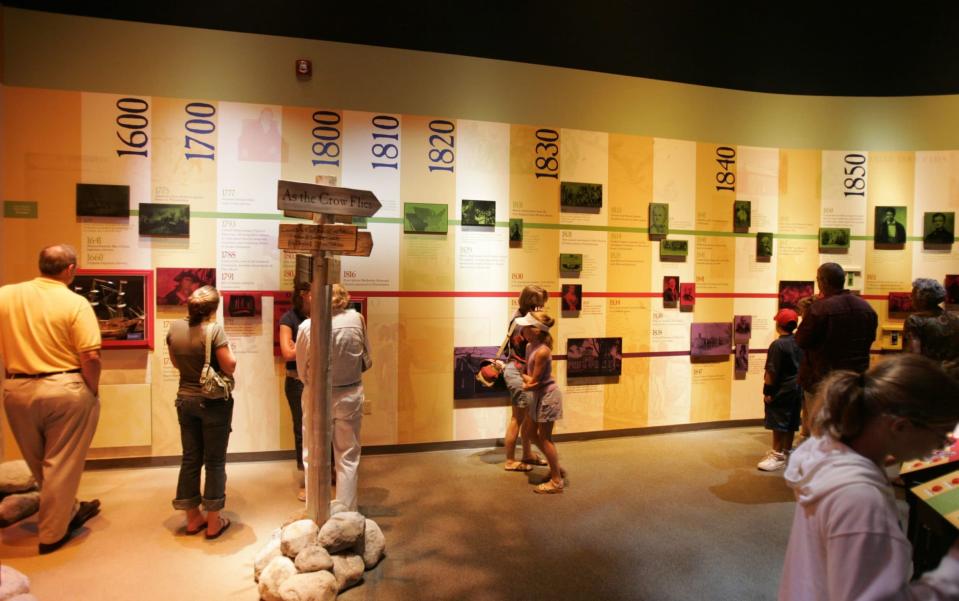
The latter group’s impact is still wholly visible where the busy Over-The-Rhine district sings of those who abandoned Hamburg and Hanover to populate it. Dressed as a worker of the era in cap and leather waistcoat, Carl Swabek of American Legacy Tours walks me through the turbulence which shaped “the OTR”. It grew up as an enclave obsessed with brewing, pumping out ale for weary German labourers. It would be ripped apart because of this same demographic – its spirit destroyed by the First World War and its fostering of anti-German sentiment. Then came Prohibition, in 1919 – which strangled its businesses.
Ghosts remain. Streets had their names altered, traces of the old country erased in a blaze of star-spangled patriotism. But some remember. A corner wall on Republic Street is still engraved with the echo “Bremen Street”. “The neighbourhood was 70 per cent German,” Swabek explains. “They were crammed into these houses. Living conditions were tough.”
They would not improve immediately. Like many US cities, Cincinnati declined in the Fifties and Sixties, its more affluent residents running from crime and poverty to the sanctuary of the suburbs. But equally, it has witnessed a resurgence this century. For one thing, the beer evangelists have returned. In the OTR, Taft’s Ale House is slotted into a former church with such care that a mural of St Paul – to whom the building was originally dedicated – can be seen behind the brewing tanks. He looks cross – perhaps because his name has been replaced above the door by that of William Taft, the Cincinnati-born 27th US president.
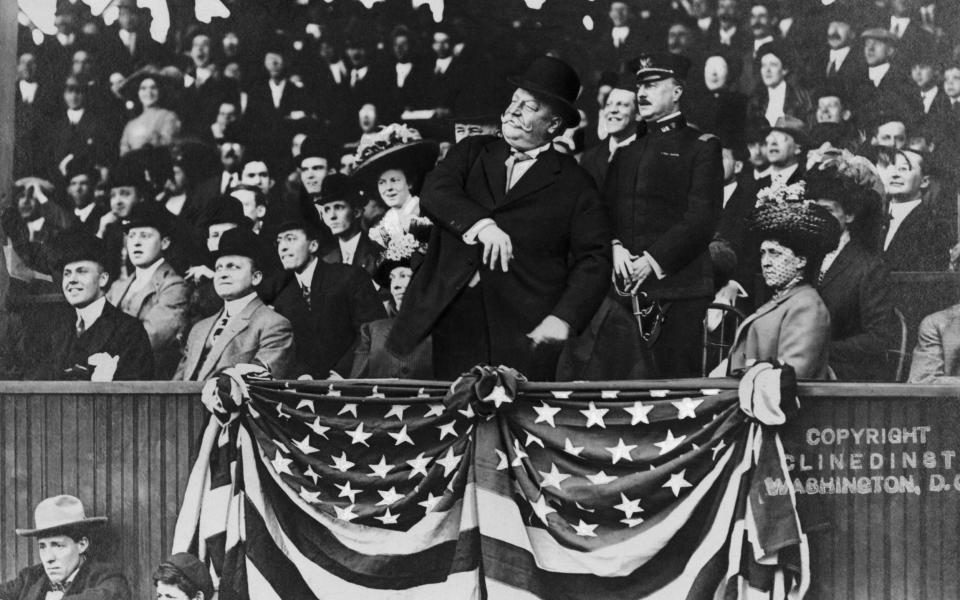
Down at the river, meanwhile – perched between the two giant stadia where the Bengals and the Reds (respectively, Cincinnati’s major-league American football and baseball teams) do their stuff – Moerlein Lager House trades on the city’s German past. A 21st-century version of the beer hall, it revels in match-day crowds and potent ales. The 6.7 per cent “Bockfest Homebrew” goes straight to my head.
But it is not only in the clink of tankards that Cincinnati shows its regeneration. The OTR delivers fine dining at Salazar, where titular chef Jose offers dishes such as a “heritage breed” pork chop with creamed kale and pecan cornbread.
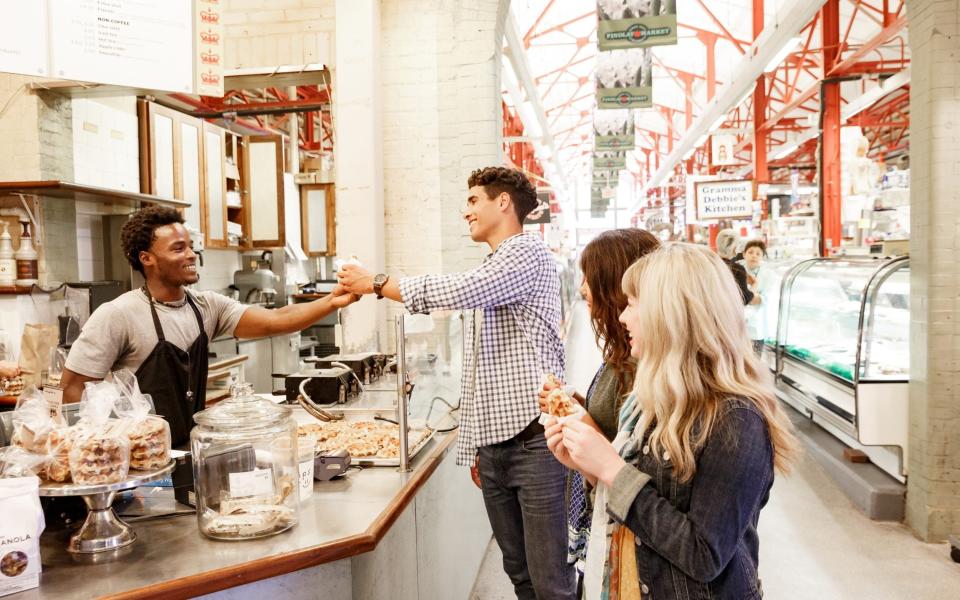
Findlay Market feels similarly up to date, though it has existed since 1852. The electric trams that have zipped around the core of the city since 2016 glide past its many stores and stalls. They disgorge shoppers into the likes of Maverick Chocolate Co, where you can buy a bourbon-laced “Prohibition Bar” – and Eckerlin Meats, which sells goetta, a German-American mash-up of pork, beef, oats and spices. Here – along with the Lebanese accents and products in Dean’s Mediterranean Imports – is the city’s distinct genealogy writ large. “Goetta is great with an egg for breakfast,” says Barb Cooper of Cincinnati Food Tours. “And it’s such a Cincinnati thing. If you go 20 miles outside, you find that many folks haven’t heard of it.”
There is culture as well as food. Between the OTR and the river is Downtown, where the Contemporary Art Center stands proud as Zaha Hadid’s final project in North America – its concrete walls bright with temporary exhibitions. The adjacent 21C Museum Hotel, meanwhile, is a clever reimagining of the 1912 Metropole Hotel, its lobby turned into a gallery. On the days I am there, it is alive with installations by Mexican artist Margarita Cabrera – her life-size stitching together of a VW Beetle from coarse material, its doors and roof deliberately collapsing, meant as a comment on declining US-Mexican relations.
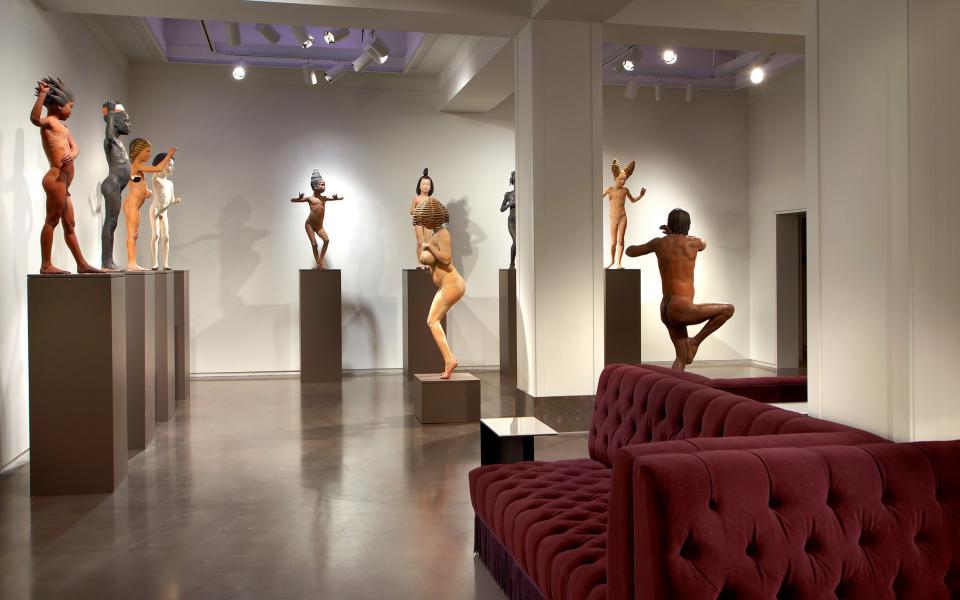
Cincinnati’s reanimation has been so infectious that it has spread across the river onto the Kentucky shore. Half a century ago, Newport was nobody’s idea of refined or arty – though it was plenty of people’s idea of a good time. It made its reputation in the Forties and Fifties – occupying a slot on the timeline of American hedonism somewhere between the fading of Atlantic City and the ascent of Las Vegas, and partying all night as a nest of brothels, illegal gambling joints and mob-run bars. It did this with such alacrity that American Legacy Tours sells a gangster-themed overview of the town – along Monmouth Street, which once rang to the sound of drunken gunshots and “houses of ill-repute”; past the bulky building at 518 York Street, once the site of The Yorkshire, a club operated by the Cleveland mafia. All is (thankfully) calmer now – and the local booze is not so much bootleg moonshine as the bourbon and gin crafted by New Riff Distilling, at the riverside.
Two miles away, over the side-channel of the Licking River, the separate Kentucky town of Covington also has a thirst – for flights of beer and hipster ambience at Braxton Brewing Company, and for the whisky-heavy cocktail list at Hotel Covington, a 1901 department store now reimagined as a 114-room retreat. Outside, the courtyard is heaving with merriment and refreshed chatter – that afternoon’s Pride march having coalesced into an evening party.
On the back wall, someone has taken their Kentucky accent and turned it into a witty slogan – writing the message “Y’all Means All!” in streaks of rainbow chalk. The words are light, joyful; they almost float. But they have power and pertinence too, here on a riverbank where fugitives once fled oppression. Throughout its history, people have travelled a long way to settle in Cincinnati. The city has come a long way in return.
Essentials
Getting there: The new British Airways (0344 493 0787) flight from Heathrow will serve Cincinnati five times a week in summer, and four a week in winter, with return fares from £498.
Where to stay: The 21C Museum Hotel has doubles from £161. Hotel Covington, across the river in Kentucky, has doubles from £177.
Further information: Visit Cincy, Ohio, meetNKY, Kentucky Tourism, Visit the USA

 Yahoo Sports
Yahoo Sports 